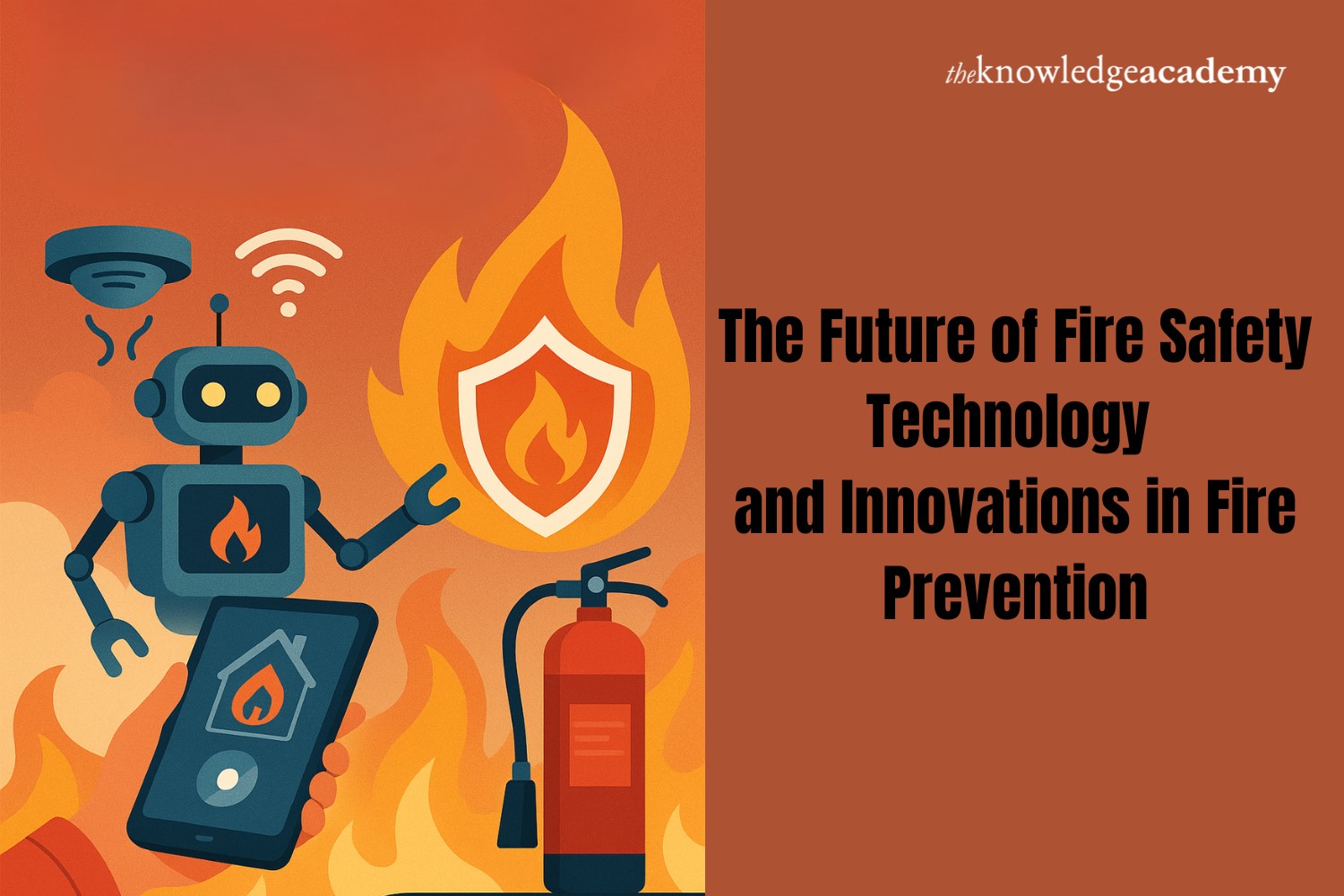The Future of Fire Safety: Technology and Innovations in Fire Prevention
Fire has always been one of humanity’s greatest risks, and while traditional measures remain important, the future is shaping up differently. With Fire Safety Training becoming more advanced, people now recognize the need for technology-driven solutions. If you have ever wondered What is Fire Safety, it is not just about reacting to fires but also about preventing them with the right knowledge and tools.
Let us explore how technology and innovation are reshaping the way we protect lives and spaces.
Table of Contents
- Technology Shaping the Future of Fire Safety
- Innovations Driving Fire Prevention Forward
- Conclusion
Technology Shaping the Future of Fire Safety
Below are the key technologies shaping the future of fire safety:
Smart Detection Systems
Traditional smoke alarms are now only one aspect of modern detection systems. To identify hazards early on, they employ heat sensors and analytics driven by artificial intelligence. Before smoke even emerges, a sensor can detect a slow increase in temperature or harmful chemical concentrations. Numerous systems connect to smartphones, providing citizens and safety teams with immediate alerts. This enables quicker action and prevents dangers from escalating into catastrophes. Prevention is more successful when combined with fire safety training because people are fully aware of how to react to these alarms.
AI and Predictive Analytics
Artificial intelligence is rapidly emerging as one of the most effective preventative strategies. AI processes data from sensors, machinery, and even the environment. It can draw attention to trends like overworked electrical circuits or overheating gear. Predictive analytics can identify hazards in industries and offices long before they result in a fire. This changes the concept of fire safety from responding to an occurrence to anticipating and averting risks.
Robotics in Firefighting
Firefighting robots are useful in dangerous areas like tunnels or shaky structures. These robots can go into harsh situations since they are outfitted with cameras, sensors, and water or foam systems. They combat fires in hazardous areas for people and offer real-time pictures. This improves response efforts and lessens the risk to firefighters. Their use in putting out fires will only increase as robotics advances.
Smart Buildings with Integrated Safety Systems
Alarms and evacuation routes are all integrated into a single intelligent network in smart buildings. The building immediately alerts emergency services and directs people to exits when it detects a threat. To prevent the spread of smoke, ventilation systems can also shut off on their own. Those who have received fire safety training are better equipped to follow these automatic systems with composure, guaranteeing a speedy and safe evacuation.
Innovations Driving Fire Prevention Forward
Below are the key innovations driving fire prevention forward:
Drones for Fire Monitoring
The way that fire hazards are tracked and controlled is evolving thanks to drones. During forest fires or major industrial mishaps, they provide emergency teams with real-time information using thermal imaging and aerial cameras. They also aid in the mapping of high-risk areas for planning purposes. Drones give communities and firefighters a significant edge by enabling the collection of precise data without endangering human lives.
Wearable Safety Devices
Another advancement in protection is wearable technology. Devices that monitor physical stress, temperature exposure, or smoke levels are now available to workers in hazardous environments. Supervisors and the wearer receive alerts if hazards are identified. These gadgets reinforce the skills taught in fire safety training by speeding up reaction times and motivating people to take safety seriously every day.
Fire-Resistant Materials
More heat-resistant and ignition-resistant construction materials are being developed. By slowing the spread of flames, coatings can buy more time for evacuation. These developments lessen harm and save lives in sectors including construction and aviation. Additionally, they broaden the definition of fire safety by demonstrating how prevention can be included directly into the products we use.
Community-Centered Safety Apps
Communities are staying connected and secure thanks to mobile apps. These apps allow users to report risks in real time and give evacuation maps. By connecting people with emergency services, they foster a shared responsibility culture. This invention guarantees community safety in addition to workplace safety.
Conclusion
Fire prevention is no longer just about alarms and extinguishers. With smart systems and predictive tools on one hand, safety is entering a new era. Creative innovations like drones and resistant materials are also shaping the future of fire prevention. A certification from The Knowledge Academy can assist in advancing your understanding of these concepts and preparing for a safer tomorrow.
- What to Check Before Downloading Any Loan App in India
- How Currency Depreciation Affects The Share Market
- Why Fasting Blood Sugar is Important Before Surgery or Health Checkups
- Life Made Simpler With Grooming Essentials Arriving In Mins
- Mutual Funds vs ELSS Funds: Which One should have a Spot in Your Portfolio?

